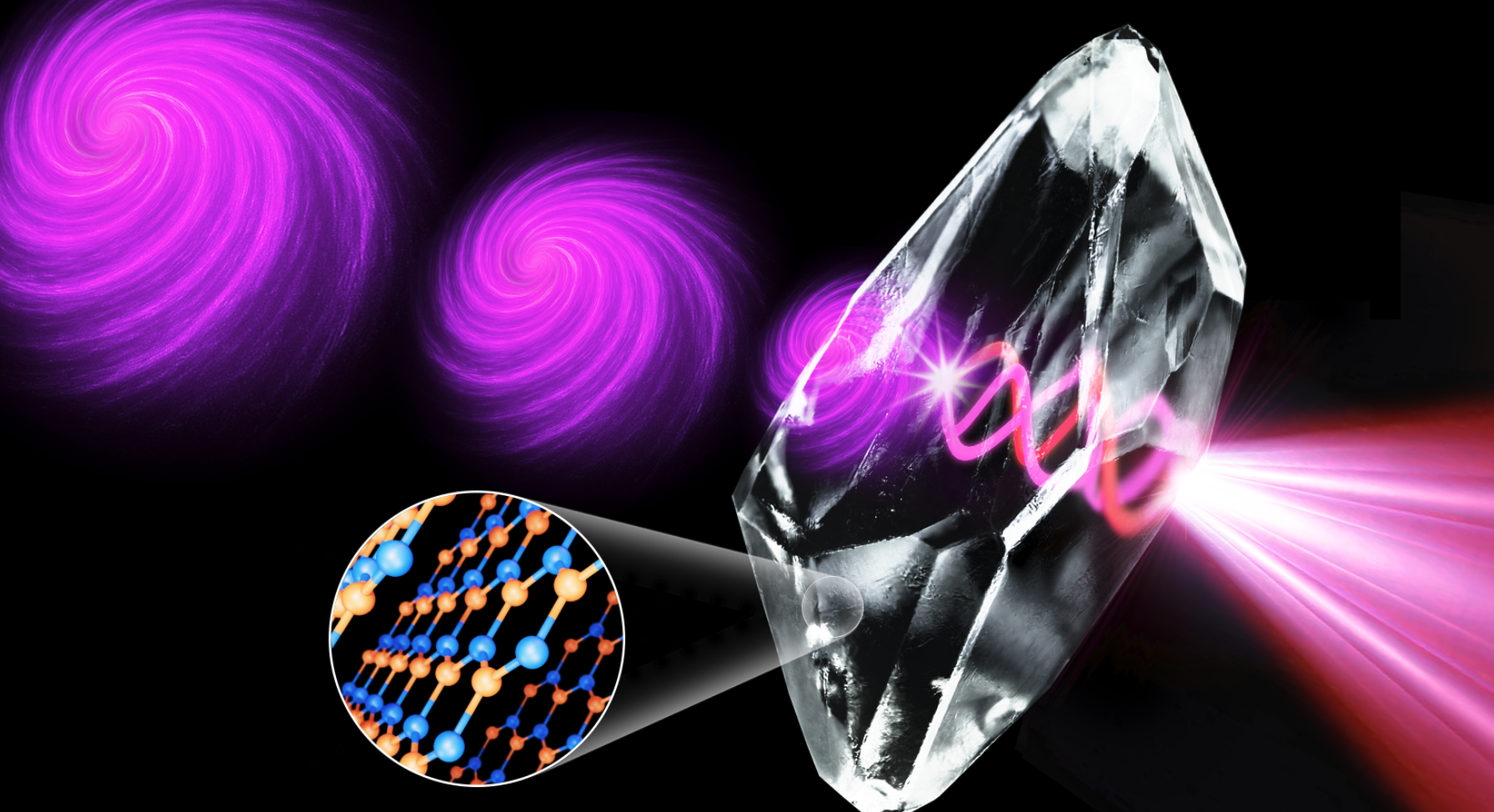Media release
From:
A weak physical force, like that which allows spiders to walk on a ceiling, could hold the key to a new revolution in optical communications, thanks to a discovery by University of Melbourne researchers and their collaborators at Hanyang University in South Korea.
The team has discovered a new way to create ‘light twisters,’ or spiralling whirlpools of light, through a substance held together through this force. It could lead to improved speed, affordability and security in optical communications, such as Australia’s NBN, which uses optical fibres to guide light over long distances.
The breakthrough was published in the journal ‘Light: Science and Applications’ this week.
The project was jointly led by PhD student Sujeong Byun, supervised by Dr Sejeong Kim from the University of Melbourne’s Faculty of Engineering and Information Technology, and PhD student Jaegang Jo, supervised by Associate Professor Haejun Chung from Hanyang University.
Drawing on the unique properties of an ultra-thin manufactured, layered crystal, called Van der Waals (vdW) materials, the team created the light twisters in their optics lab – working at scales thinner than a human hair.
vdW materials are made up of layers that stick to each other through a ‘van der Waals force’ – the force that prevents spiders from falling. It is strong enough to hold layers together, but weak enough for them to easily be pulled apart and reconfigured.
The team pooled expertise in materials science, physics and optical engineering to achieve this effect. Until now, the only way to create such twisters required bulky and expensive technology.
Ms Byun said the process could be a game-changer for wide-scale optical communications.
“Because of the spiral structure, the light twisters offer an additional dimension for encoding information. Like the construction of extra lanes on a data highway, it would allow more information to travel at once,” Ms Byun said.
“We found that when circularly-polarised light, – where all the light particles (photons) spin in the same direction – enters the vdW material, the direction of its spin flips, and it gains a spiral twist, turning it into an optical vortex, or whirlpool of light.”
“Until now, some researchers have speculated on the potential of this material to twist light this way. Now, we have achieved it experimentally for the first time.”
The global market in optical communications systems and networking is expected to grow from US$15.53 billion in 2024 to US$29.52 billion by 2032.
“Many researchers are working to advance optical communications to overcome speed and security challenges,” Dr Kim said.
“By ‘twisting light’ through beams, optical networks could potentially store up to 50 times more data than existing networks. By using different ‘twists,’ multiple bits of information could be encoded on a single photon, or light particle – significantly increasing overall data capacity.”
“With our solution, it becomes possible to create a tiny device, at the on-chip scale, that will allow fibre optics communication to increase bandwidth, which is very exciting for the industry. It offers the prospect of smaller, cheaper and more scalable optical devices that could be integrated into future communication systems, including satellites.”
The team is now working to make the process compatible with existing communications technologies and exploring how the technology can be integrated into larger optical systems.
Multimedia




 Australia; VIC
Australia; VIC


